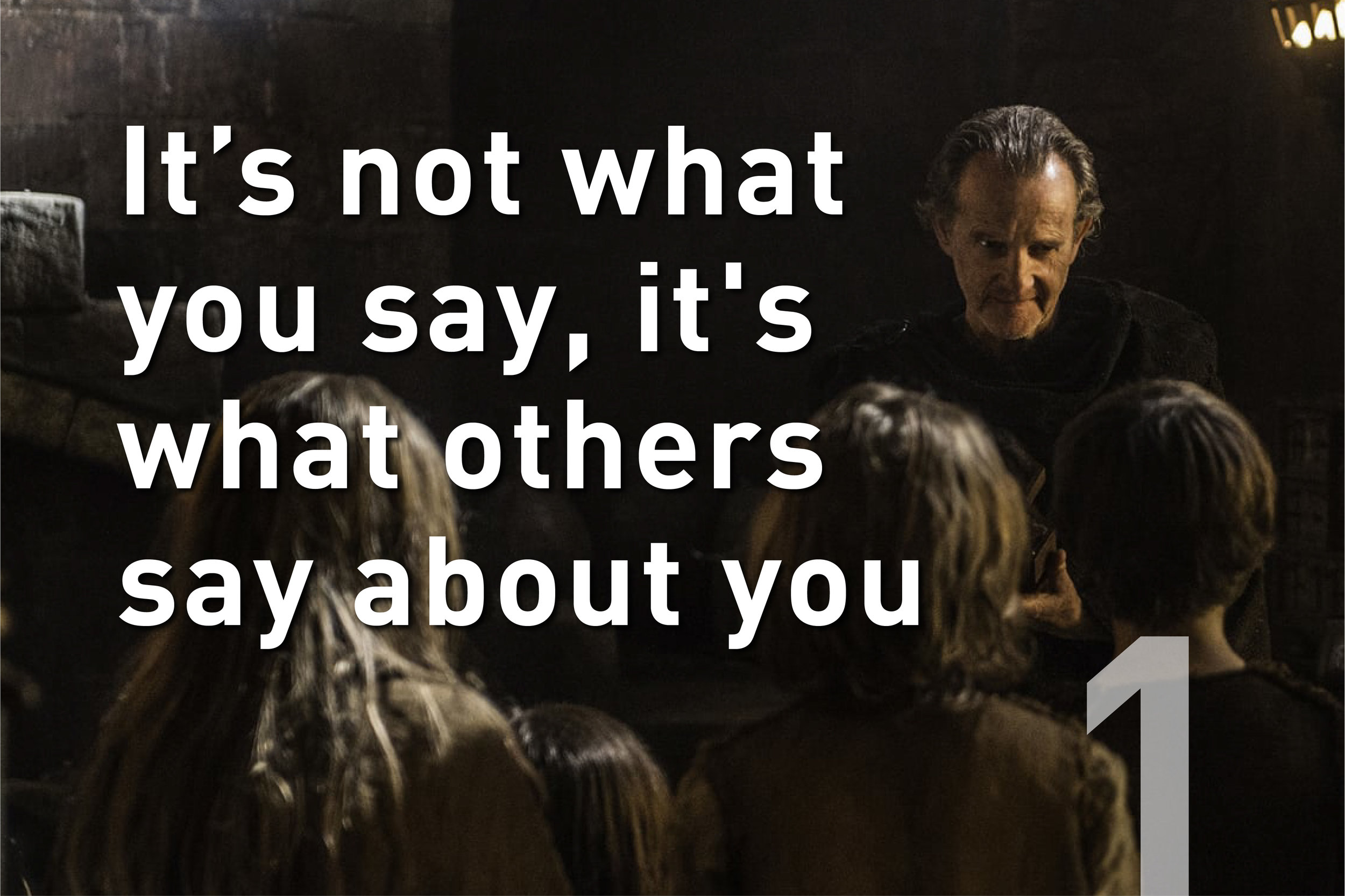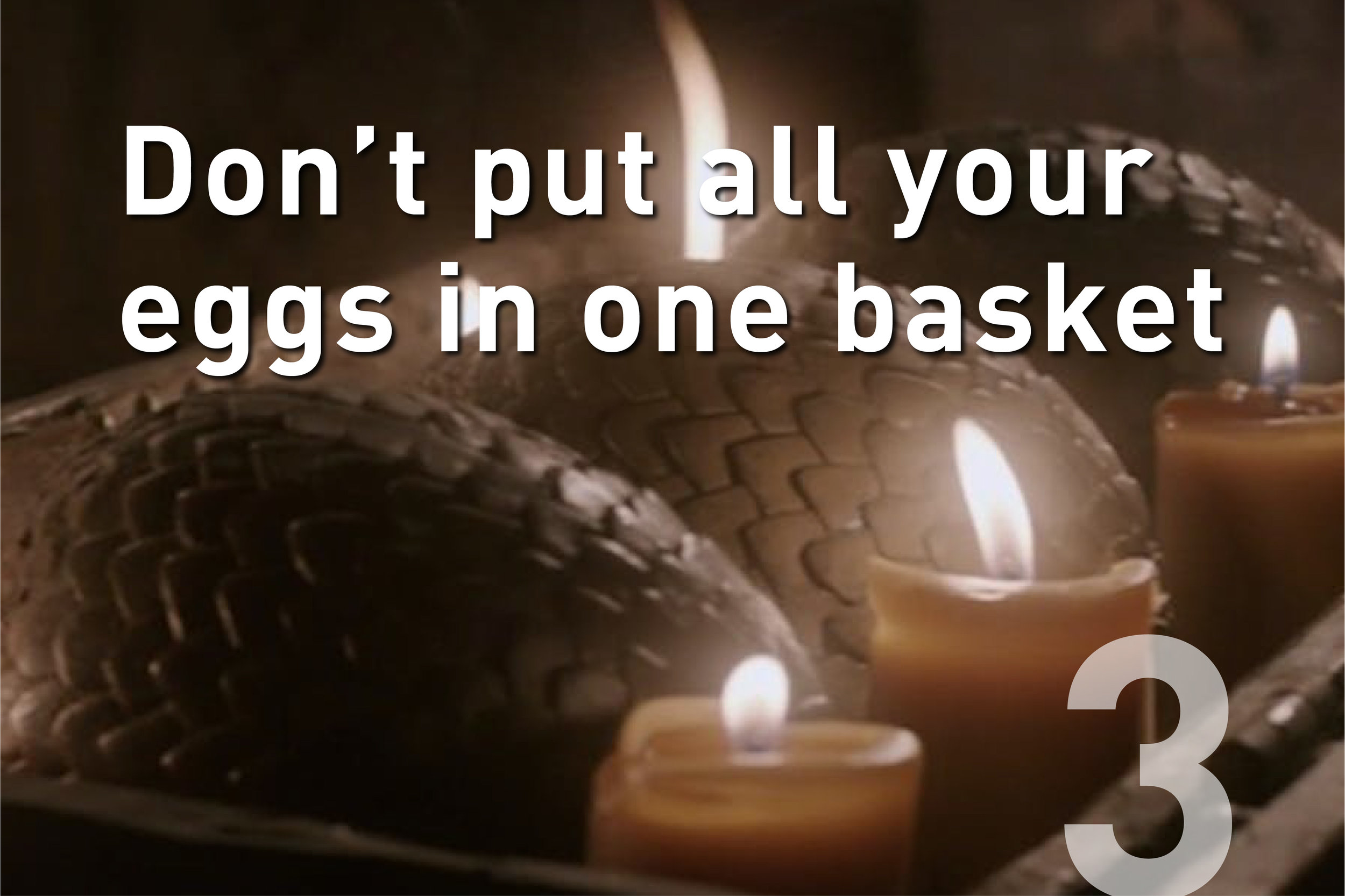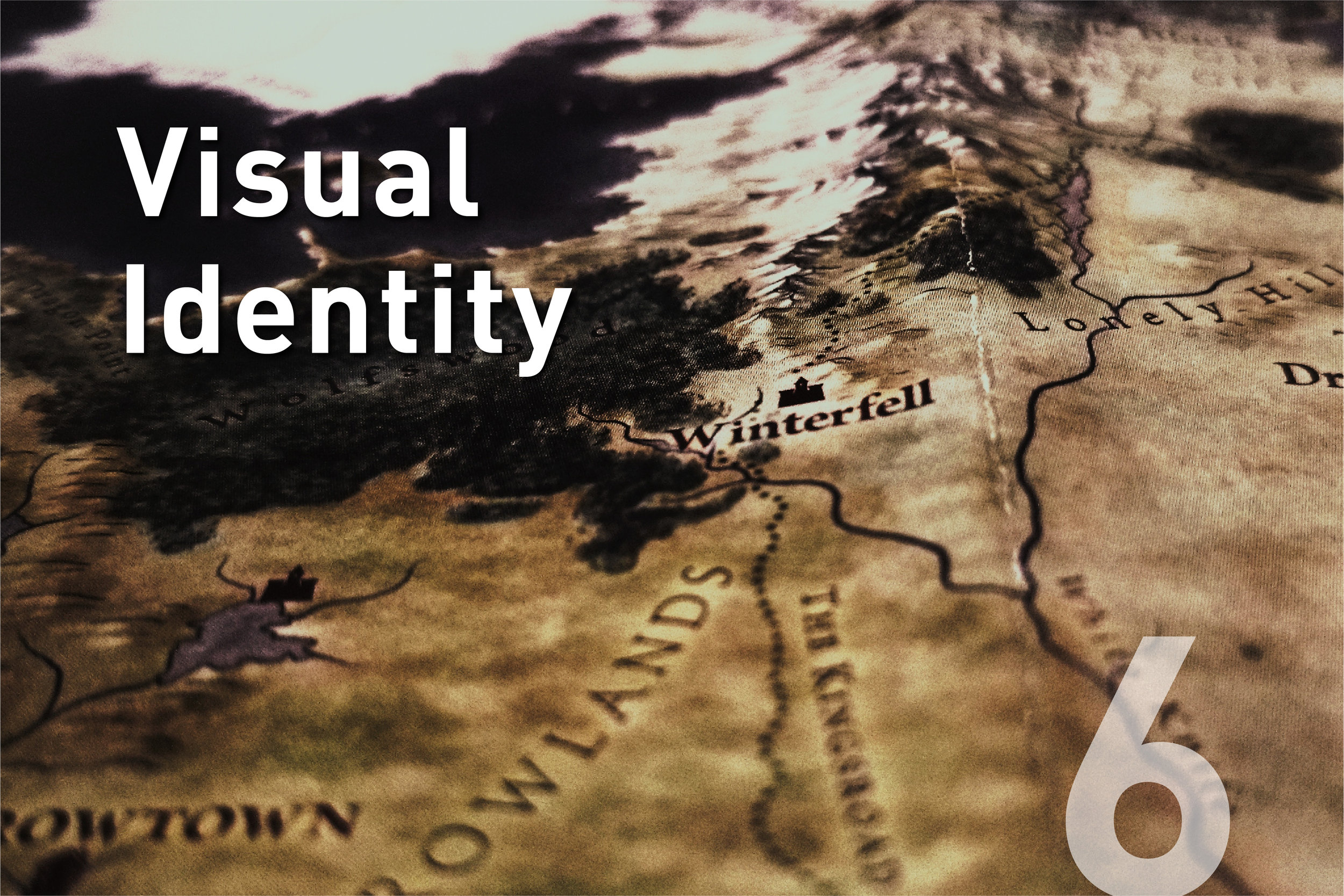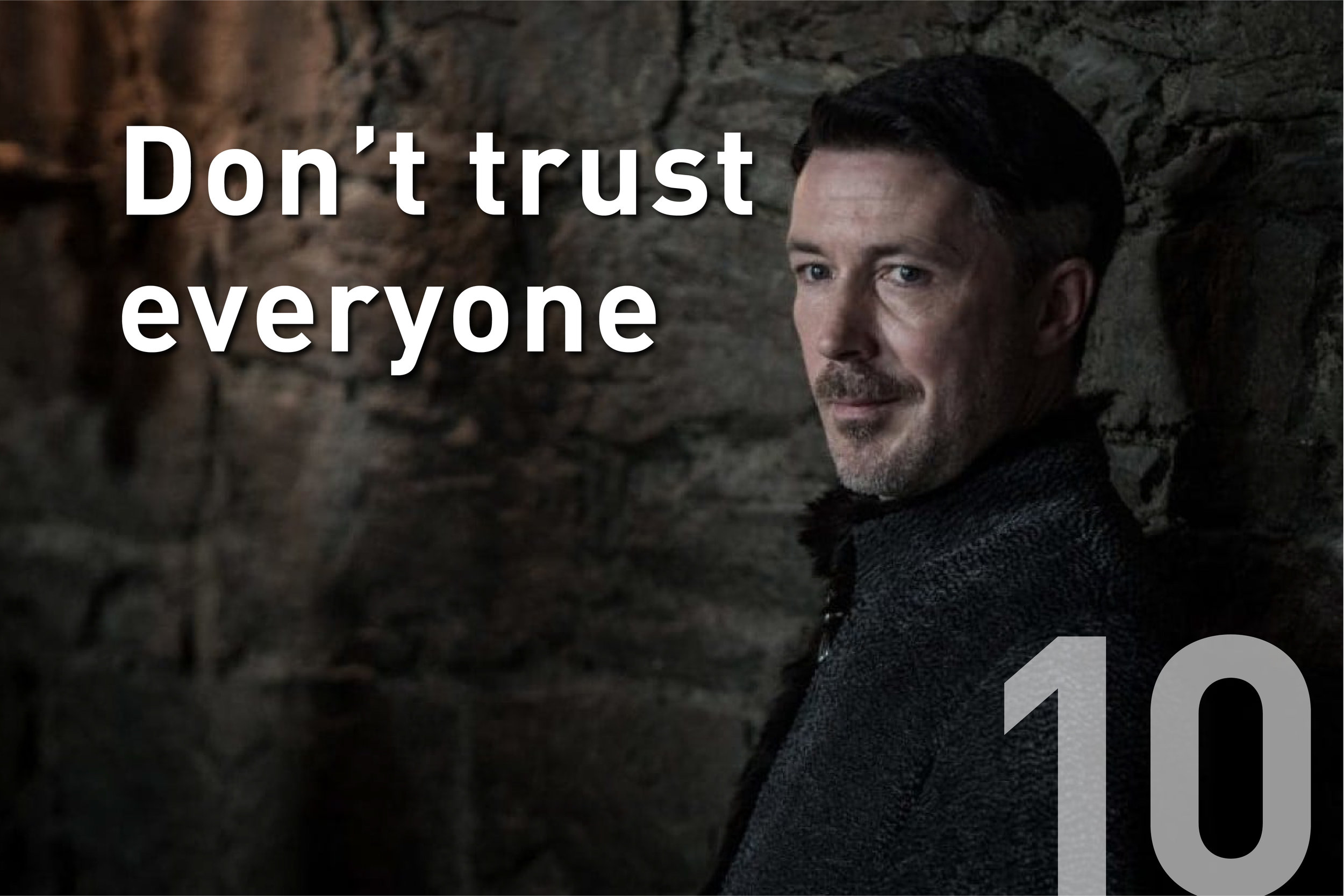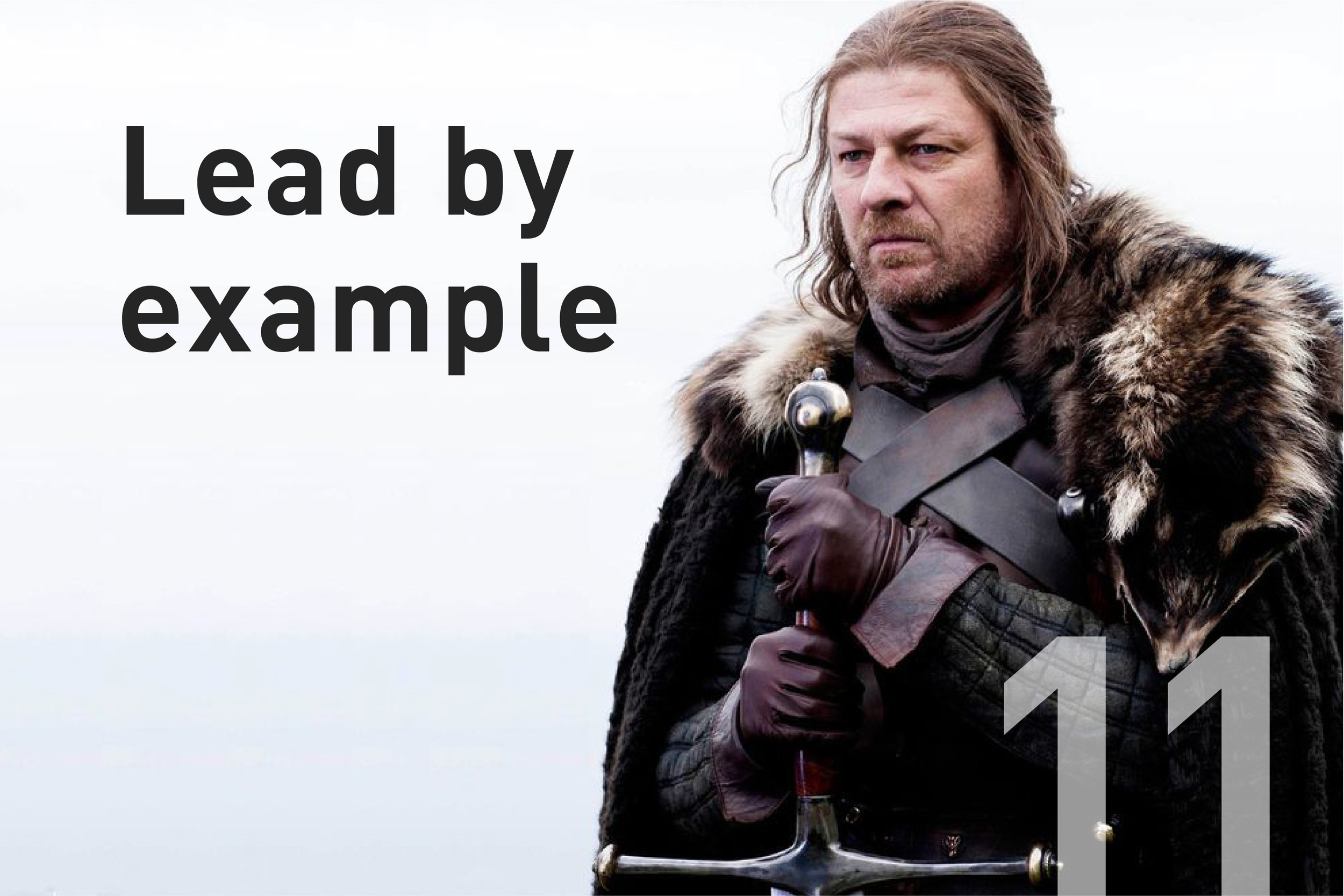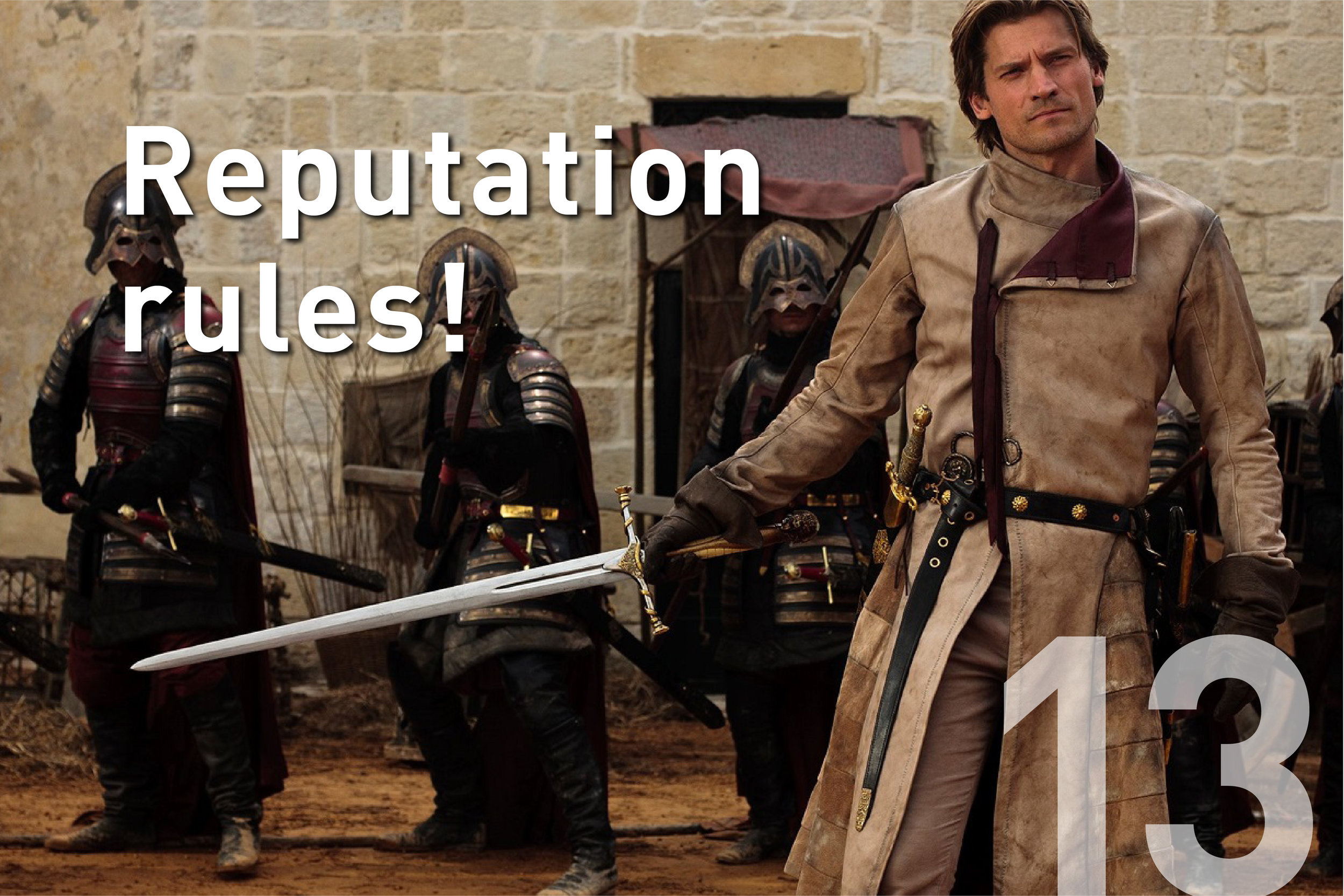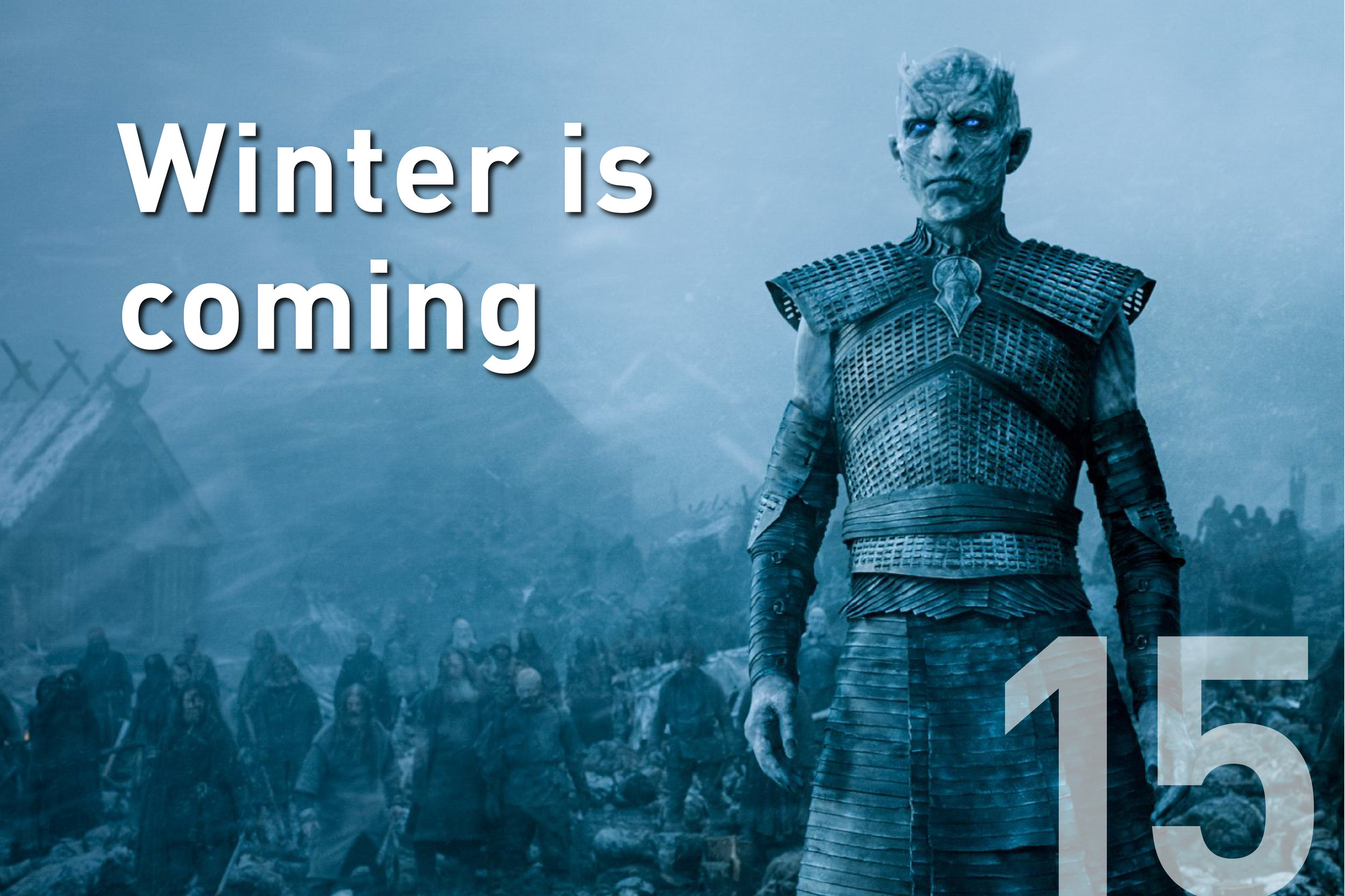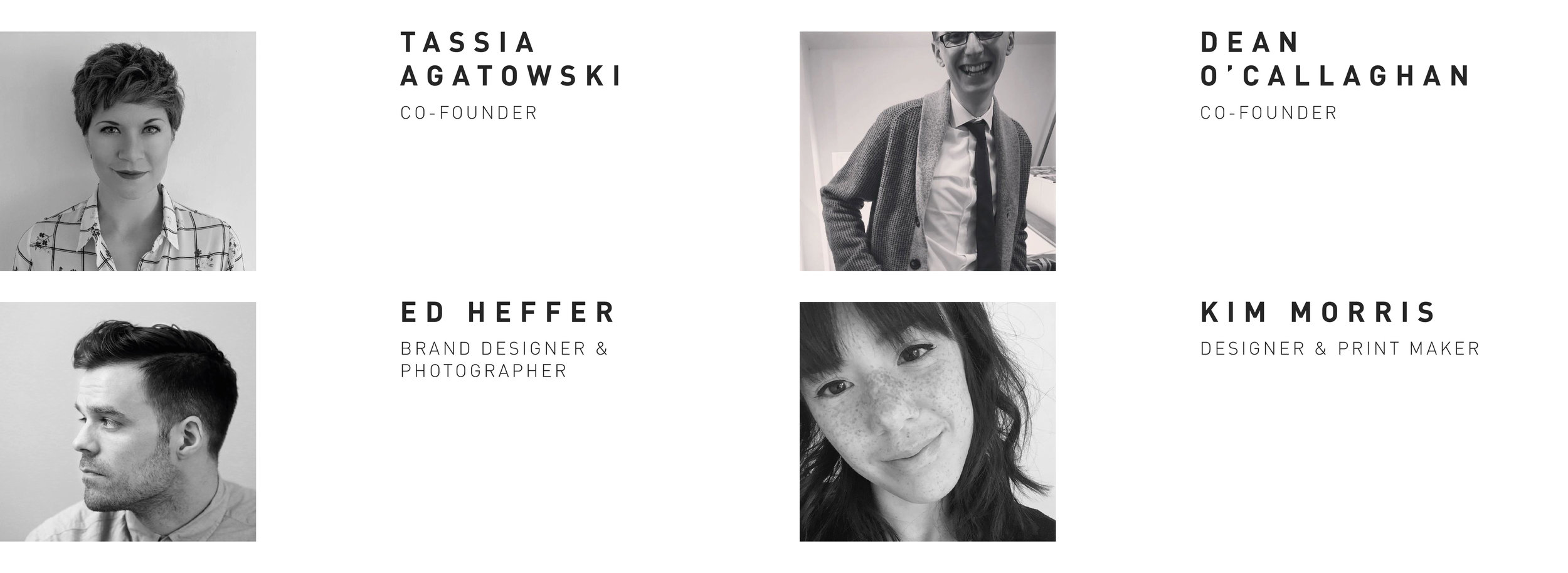15 Lessons Game of Thrones Can Teach Us About Branding
Image courtesy of HBO
Reading time: 13 mins
… and now our watch has ended.
No matter how you feel about the final season of Game of Thrones, there’s no doubt that it’s produced some of the best television in the last decade.
It’s redefined the medium in terms of scale and visual spectacle.
As avid fans of GoT, and because we take our branding and marketing inspiration from everywhere, we’ve spent hours discussing storylines, character development, and the various themes and metaphors.
Looking back over the past eight seasons, we noticed, buried beneath the rubble of King’s Landing, something interesting and unexpected…
Lessons in branding.
We know it sounds like a stretch - but we swear on the old gods and the new, there are some awesome lessons to be learned.
So we’ve assembled our banner men, and we’re rallying together to share these branding lessons with you, the people of the seven Kingdoms… and the internet.
This article contains spoilers from all seasons of Game of Thrones. Consider this your warning!
Image courtesy of HBO
Branding is something that’s key to the success of every business endeavour, but it can be hard to get right.
So, without further ado, here are our favourite lessons we’ve found in Game of Thrones to help you build your business:
Image courtesy of HBO
It’s not what you say, it's what others say about you
Over the eight seasons how many times have we heard the phrase ‘A Lannister always pays his debts’?
A lot. It’s the Lannister house motto, right?
Wrong.
If you’re a Game of Thrones superfan, like us, you will know that the real house motto is ‘Hear me roar’.
Branding is all about perception.
How your audience and potential consumers perceive your brand.
You can roar as loud as a dragon, but you'll never match the mass whispers of your audience.
This can be a powerful force for both negative and positive - if you listen carefully and lean into those whispers, you can hear deep truths about your brand directly from your consumers’ perspective, which you can work into your brand’s messaging and designs.
If you can master this, you can have a brand as rich as the Lannisters!
Image courtesy of HBO
Know your audience
When exploring a new audience, do your research and lay your foundation before fully launching your brand.
Just like Dany going to Westeros to claim the Iron Throne, it’s generally not a good idea to just throw your brand out into a new territory and a new audience without much thought, and just the feeling that you’re ‘entitled’ to that audience.
Dany built up her brand gradually from nothing in Essos, where her message was clear and resonated with her audience.
But the people of Westeros didn’t know Dany’s brand back story.
They had not seen what she had achieved in Essos.
The Breaker of Chains became yet another power-hungry leader fighting for the throne.
How Dany built her brand in Essos was pretty much a how-to guide for any brand - having a clear goal and core audience, with every action as a brand moving towards that goal.
A goal that serves others, not just itself.
Don’t make the same mistake as Dany.
When your business is exploring a new audience, new territory or new product range, be sure to conduct thorough market research.
Image courtesy of HBO
Don’t put all your eggs in one basket
For about three seasons, we were all hyped up about the power and might of the Golden Company.
Then, in the penultimate episode, they were completely obliterated in just a few fiery breaths by Drogon in a matter of seconds.
Cersei put a lot of faith in the Golden Company, only to have them destroyed as soon as the battle started.
As a business, you need to make sure that your offering is well-balanced, not just relying on one product range, or one aspect of your service.
If anything were to happen to that product range or that element of your offering, like an unexpected price jump form a supplier, or a key member of staff leaving, you need to make sure that other products or other elements of your service can (even temporarily) pick up the slack.
Image courtesy of HBO
Be the Master of Whispers
Varys’ job as Master of Whispers was fundamental to a lot of the goings-on in Westeros throughout the series.
His ‘little birds’ fed tidbits of information from throughout the kingdom back to him, giving him the knowledge he needed to help guide the various councils and rulers of Westeros.
He used this information to help achieve his ultimate goal to do what’s best for the people of Westeros in general.
Data is gold-dust to your business.
And it’s never been easier to get at least some insightful information and metrics so you can tailor your product or service to suit your audience.
Find your ‘little birds’ - be they through customer feedback surveys, social media metrics, email clicks/opens, or just from speaking to your customers.
Image courtesy of HBO
Go big or go home
What are the moments from Game of Thrones that stick with you?
Daenerys walking out of the fire with her dragons?
The Mountain crushing the Viper’s head?
Cersei and Tyrion’s wildfire explosions?
Those moments were huge for GoT - visually striking, explosive (literally) snapshots that everyone remembers.
It isn't possible to just ‘go big’ all the time.
It’s often expensive, and if you do it too often, it’ll be less effective.
Create key points in your branding and marketing strategies where you truly wow your audience, and give them something to remember.
Just try not to kill anyone, like GoT always did…
Image courtesy of HBO
Visual identity
Brand logos are like house sigils - they’re not just recognisable, but they also have real meaning to their audience.
Many house sigils represent the family’s values, produce or geography of their home regions.
House Bolton, for example, haven’t quite thought through their brand values to portray through their visual identity - their ‘Flayed Man’ banner.
The ‘flayed man’ invokes awful emotional responses from other houses.
While House Bolton might be intending to gain the Iron Throne though fear tactics, as shown in their choice of the ‘flayed man’ as their banner, it doesn’t exactly inspire trust or leadership qualities, as one would expect from someone fighting to become Regent of the Seven Kingdoms.
Another House that hasn’t quite got it right would be House Davos - how they want their house (or brand) to be perceived shifts throughout the series.
Although it’s identifiable to many in Westeros, the onion on their banner, doesn’t allude to their bravery and heroic exploits, nor does it refer to their seafaring expertise.
All it does is give the Onion Knight (Ser Davos) a cute name.
An example of a House that has nailed their visual identity is House Frey.
Their bridge over water banner sums up the aspects of their brand they want to show their audience perfectly.
It promotes their greatest asset to Westeros while leaving out their somewhat shady moral compass.
The brick bridge is also a brilliant symbol of stability, connectivity and trust.
Another House that’s captured the best elements of their brand in their banner is the fan-favourite: the Starks.
The direwolf showcases their loyal nature, their leadership qualities, their fierceness to protect their own, and their pack mentality.
Your visual identity is fundamental to your brand, and it’s important to develop each element of the visual identity of your brand around your core values to ensure that they are both consistent and ever-present in all of your messaging.
The visual aspect of your brand is the first thing that most people see, and it should evoke an emotional response from your customers at first glance, clearly summing up your brand values.
It can also become a powerful means of differentiating your brand, inspiring loyalty from your audience, and maybe just a little fear from your competition.
Image courtesy of HBO
Hodor, hodor hodor
Too often, brands use their promotional material to overload their client with features and facts about what they do.
This can be a huge turn-off for potential customers, and an overload of information.
When looking for information, people want it simple and easy to digest.
This lesson was beautifully illustrated, if a little drawn out, by none other than everyone’s favourite big, bearded bloke, Hodor.
Hodor’s message is straightforward and clear, his purpose and reason for being inspirational and engaging.
Simplify and focus your messaging to achieve your goal.
If you have several messages, try to consolidate them into something simple and straightforward - keep answering the ‘why’ until you get to your hodor.
Why do we want customers to visit our website?
Hodor hodor, hodor, hodor hodor hodor.
Why do they perform that action on our website?
Hodor hodor hodor, hodor.
So why do they want to do that?
Hodor.
Image courtesy of HBO
Tone of voice
There are so many brands that make the mistake of crafting their tone of voice around themselves, their own achievements and asked the client to do something for them.
Joffrey constantly talked about himself, his own glory and how everyone must serve his every wild whim and desire, no matter how terrible they become.
Joffrey was hardly revered in the Seven Kingdoms.
Simply put, he was seen as an absolute knob.
When creating your brand tone of voice, remember that you’re speaking to your customer.
Consider what their challenges and expectations are, and how can you serve their needs and help them to fulfil their goals.
Be more John Snow, and less Joffrey. No-one likes Joffrey.
Here are some handy stats to back up this lesson:
57% of consumers will actively avoid brand that bombard them with poorly targeted promotional messages (Forbes Online survey 2018).
4 out of 5 people have left a web page because of an pop-up or auto-play advert (Hubspot, 2016).
Image courtesy of HBO
Offer a service customers want
Your brand must add value for your customers, offering a service or product that people actually want.
This might seem like an obvious suggestion, but too often, it can be lost in the pursuit of business success (i.e. money).
As a brand, you can’t afford to be totally selfish, and act only in your best interests.
It’s your job to think about your client.
What value can you offer them?
You need your customers, otherwise your brand will never succeed.
Brands need to be about making the world a better place, not just about making money.
For example, Daenerys’ main goal throughout the series was to be Queen of the Seven Kingdoms.
She built her brand, and convinced thousands of people to stand with her.
She offered them freedom, to break their chains.
There are many examples of her being and inspirational, aspirational and acting in her audience’s best interests.
But when things don’t go her way, she gets mad.
Super mad.
At the end of the series, she’s isolated, two of her dragons are dead, Ser Jorah’s dead, and even Jon Snow has betrayed her trust.
Her brand starts to crumble, but instead of continuing to think of her audience - her subjects - she uses fear instead, and chooses her right to the throne as her new goal, instead of actually breaking the wheel.
She wasn’t thinking of her audience, and she suffered for it.
Give the people want they want, and they’ll keep coming back.
It really is as simple as that!
Be the brand people want to be a part of, finding solutions and tackling the challenges rather than adding to them.
Image courtesy of HBO
Don’t trust everyone
As any Game of Thrones fan knows, The Faceless Men are not to be trusted.
A man is no-one, but at the same time, everyone.
As our (co-dependent) relationship between business and the internet grows, it seems as though communication and accessibility is simpler than ever.
However: you can’t trust everyone, or everything.
There are currently around 270 million fake Facebook accounts active right now (Mashable, 2018), and this is the tip of the iceberg when it comes to online trust.
So those accounts ‘liking’ your post and following your page might not be all that they seem.
Fake accounts like these can be the bane of the marketer - there’s not much worse than talking to people who you know aren’t actually real.
It’s just wasting your breath, and can be potentially damaging to your brand.
If potential customers see that you’re on Facebook with a lot of followers, then after a vicious crackdown on fake accounts and bots, Facebook then removes a big chunk of those followers, potential customers might think that your brand has done something wrong.
Keep track of who your followers are, do regular reports and do your best to make sure they are who they say they are.
So don’t take everything at face value - the Faceless Men might be using their wall of faces on your Facebook wall.
Image courtesy of HBO
Lead by example
“The man who passes the sentence should swing the sword.”- Eddard “Ned” Stark
Ned Stark is infamous within the show’s lore as the most honorable man in Westeros - a personality trait he taught Jon Snow.
Honesty and integrity are invaluable within branding, as they take time and effort to build, but they can be destroyed with seconds.
As David Brier says in his book, Brand Intervention: “Every brand must stand for something inspired, something good, something worth saving or worth resurrecting. That thing is our audience’s hero.”
To do this effectively in branding, you need to establish an effective ‘good versus evil’ story.
As the ‘hero’ in your brand, you get a chance to show exactly how good your brand is for your audience, with honesty and sincerity.
In Game of Thrones, this has been achieved by putting characters like Ned Stark and Jon Snow right in the middle of all the lies and deceit.
Think about who are the heroes and villains in your brand story. It can help focus your brand’s positioning and communication.
Image courtesy of HBO
Disruptions (dragons) are the best equaliser
Think about this: without her dragons, Daenerys would have just been yet another head of a major house with newly restored wealth and power (arguably, she might not have even got this wealth or power without her dragons).
The introduction of dragons truly ‘breaks the wheel’. In branding terms, this sets her apart within her market. It ensures her survival and can ensure yours too.
However, as Daenerys learnt in the later seasons, you need to make sure that your disruption continuously evolves over time.
You never know when your competition will develop a scorpion.
Take time to think about how you can cause disruption amongst your competition.
This disruption can mean many different things: a unique feature or benefit, a different aesthetic or tone of voice just to name a few.
Find your own dragons and set them free.
Reputation rules!
How many times in the show does Jaime Lannister get referred to as the kingslayer?
Too many times to count.
But it happened over a decade ago, when the show started.
Yet the whole of Westeros knows exactly who the kingslayer is.
Your reputation is fragile and easily broken - once it is broken, it is nearly impossible to recover.
As a brand you need to ensure a good reputation always precedes you, often it is the first impression to consumers and can have a lasting effect on their perception.
Your reputation can be dictated by your actions as a brand.
For example, look at the difference in how Margaery was treated when she stepped out in public (revered as a beloved queen) compared to when Joffrey stepped out in public (and was pelted with dung).
Image courtesy of HBO
Complacency kills
Remember that epic fight between the Mountain and the Viper, way back in season 4?
It’s definitely stuck with us, we can still remember the squelch of the Viper’s head as it was crushed in the Mountain’s hands.
Gross.
All because the Viper got too cocky and complacent, underestimating his enemy and relishing his apparent ‘victory’ far too soon.
Confidence is great in branding, but overconfidence can lead to the death of a brand through complacency.
Common signs of complacency are normally a lack of innovation within your category, over-reliance on past victories, and growing focus on delivering price instead of value (check out our previous blog on value and price here).
If you become complacent, that’s when your competition will strike, leaving you in a compromised position - one from which you may never recover.
Your confidence should be rooted in your ability to drive innovation and differentiate from your competition.
We should all take a leaf out of Bran the Broken’s book and become a branding version of the three-eyed raven: one eye on our present, one on our past, and one spying on the competition.
Image courtesy of HBO
Winter is coming
Everything changes. Your brand needs to change, too.
When winter comes, adapt to your environment. Be like the Starks - embrace the winter, as well as the summer.
Every season in Westeros has its own opportunities as well as its own challenges.
Like the freezing temperatures of winter, and the balmy weather of summer, you need to set your measurements for change, so you can proactively prepare for change.
If your metrics detect changes in the market, adapt your brand with those changes.
So, those are the 15 branding lessons we found in Game of Thrones, we hope you found them useful and that they help you to continue to develop your own brand.
We still can’t believe it’s all over, but what is dead may never die, right?
If you think of any other Game of Thrones branding lessons, pop them in the comments, we’d love them.



